Infant Formulas What’s for What and What’s for

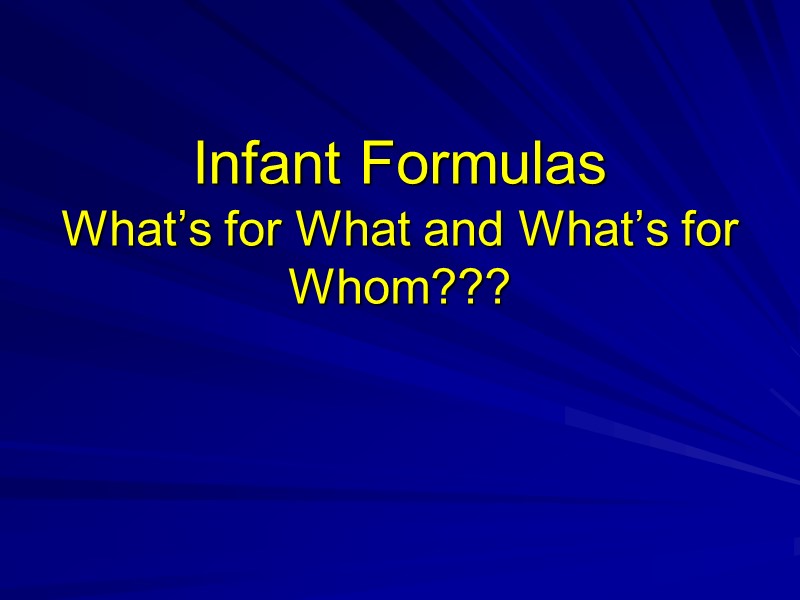
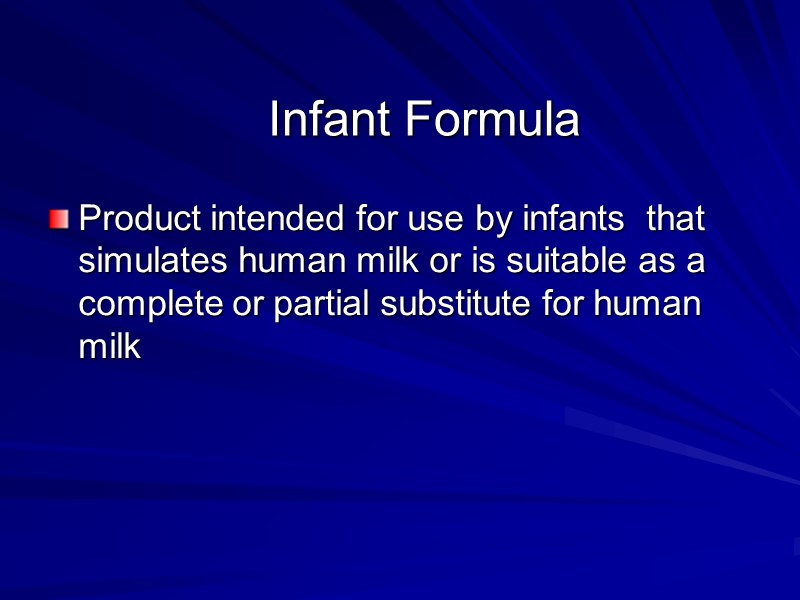
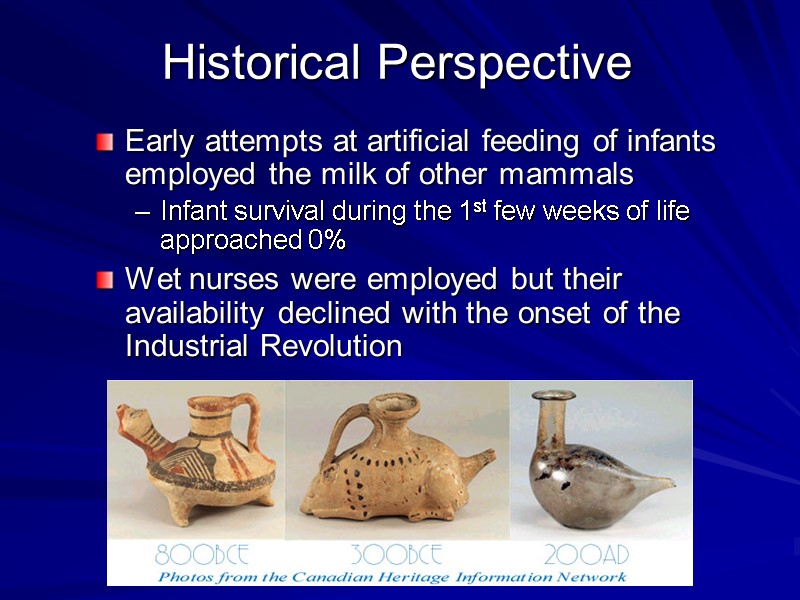
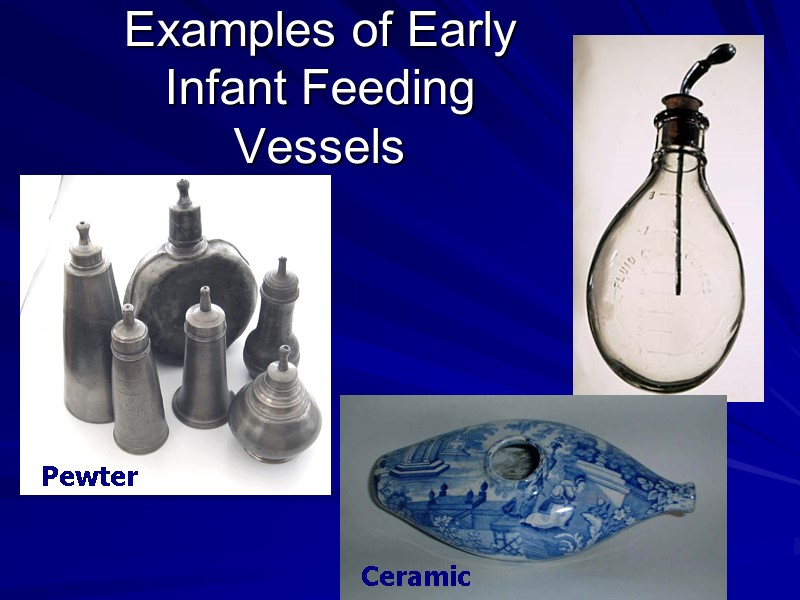
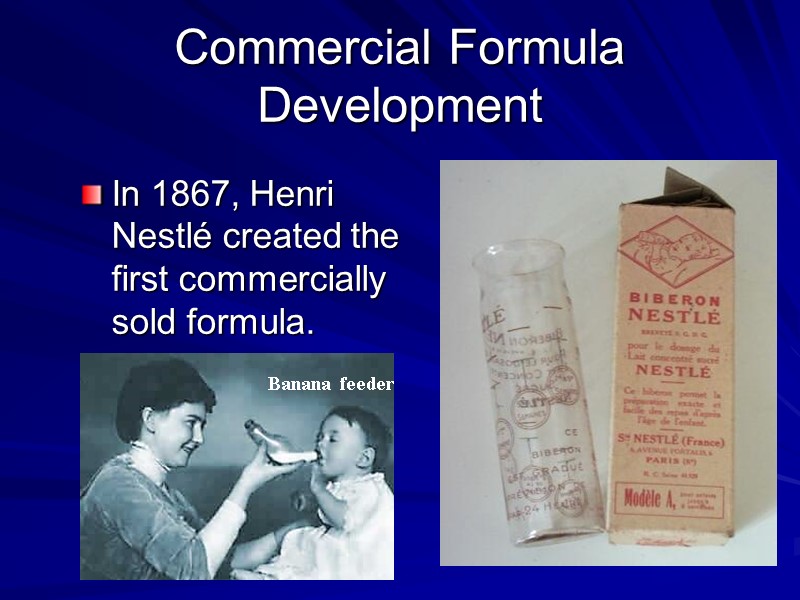
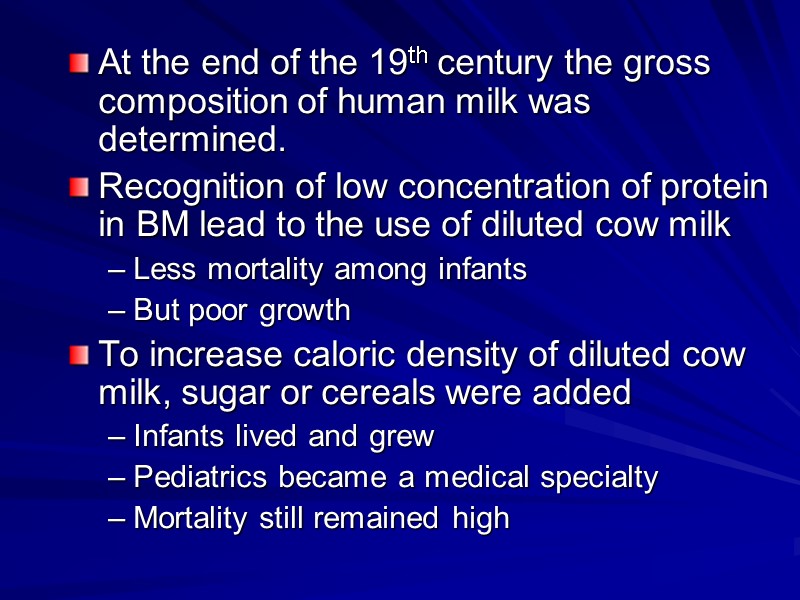

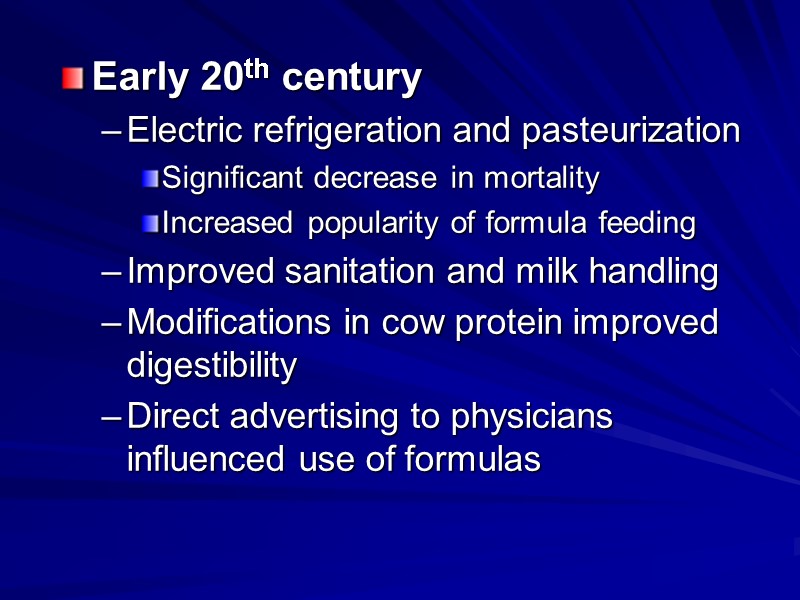
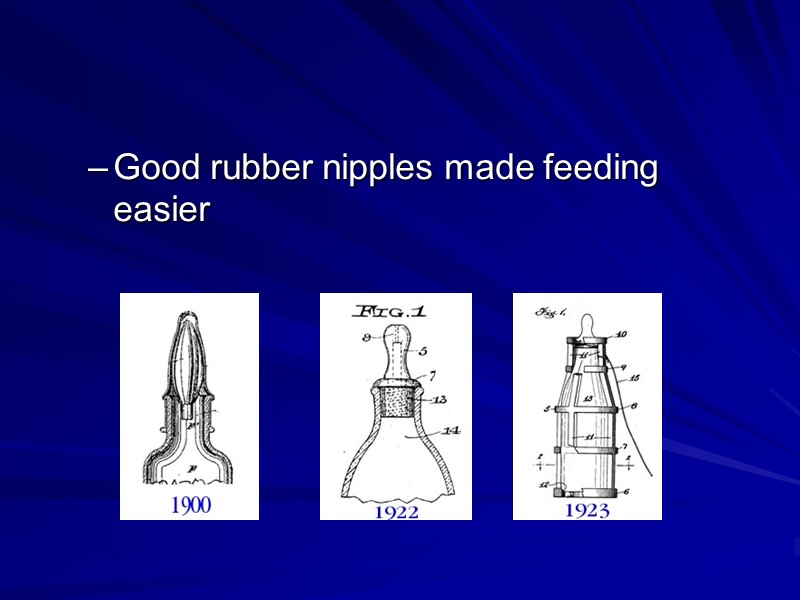
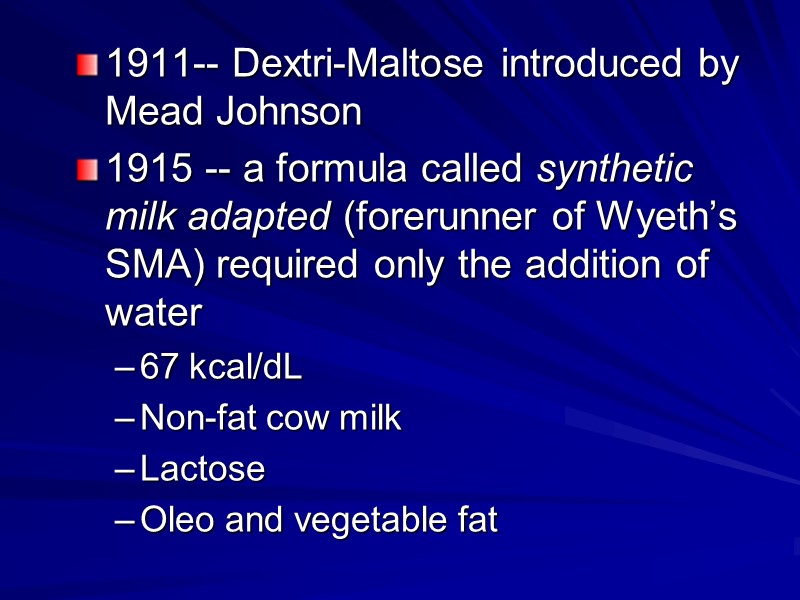
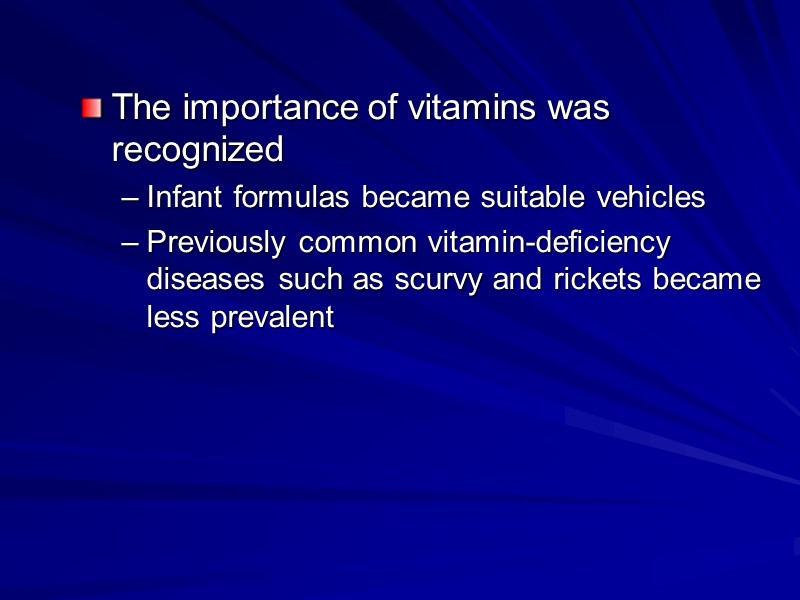
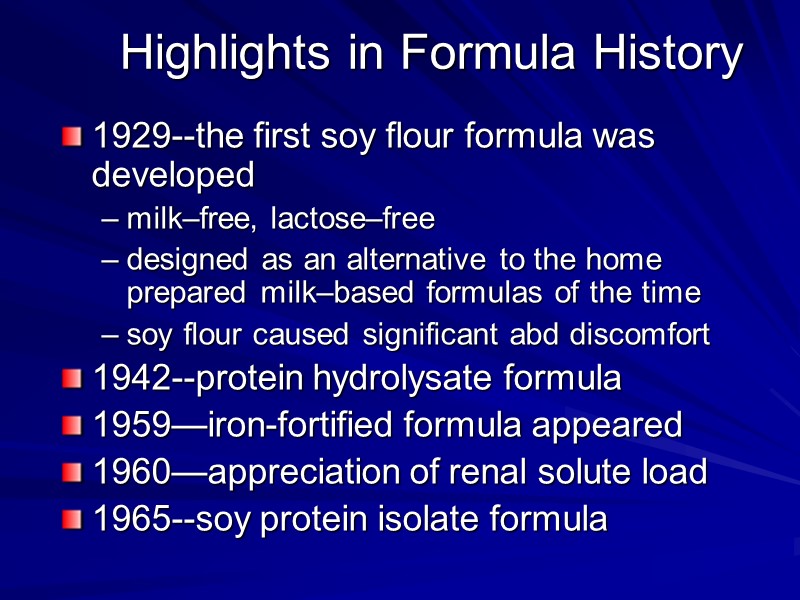
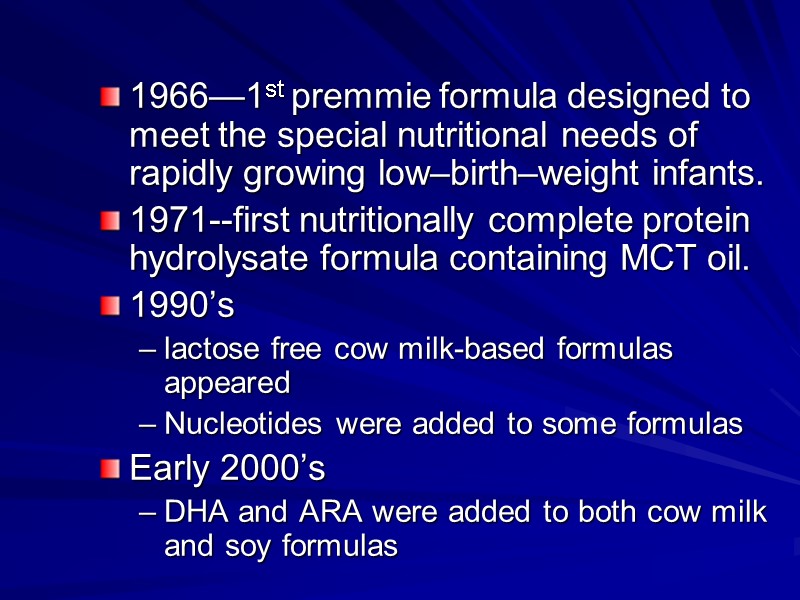
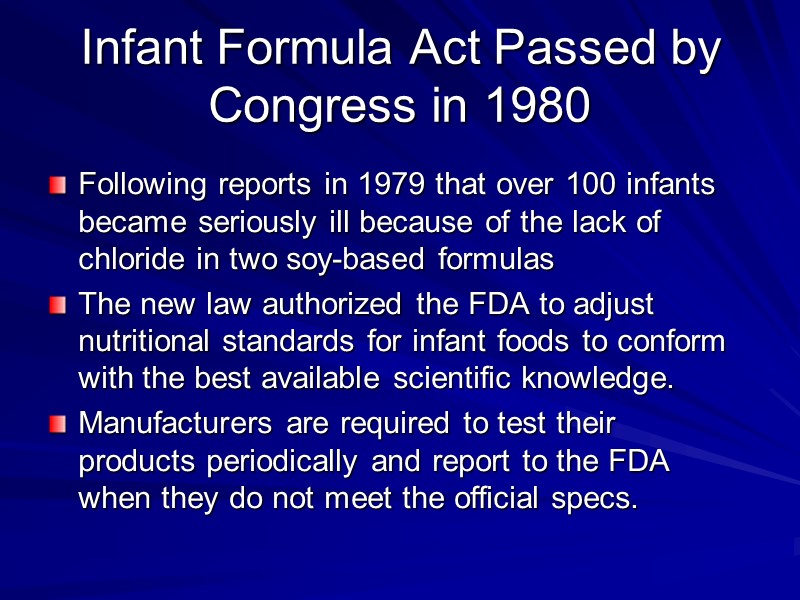
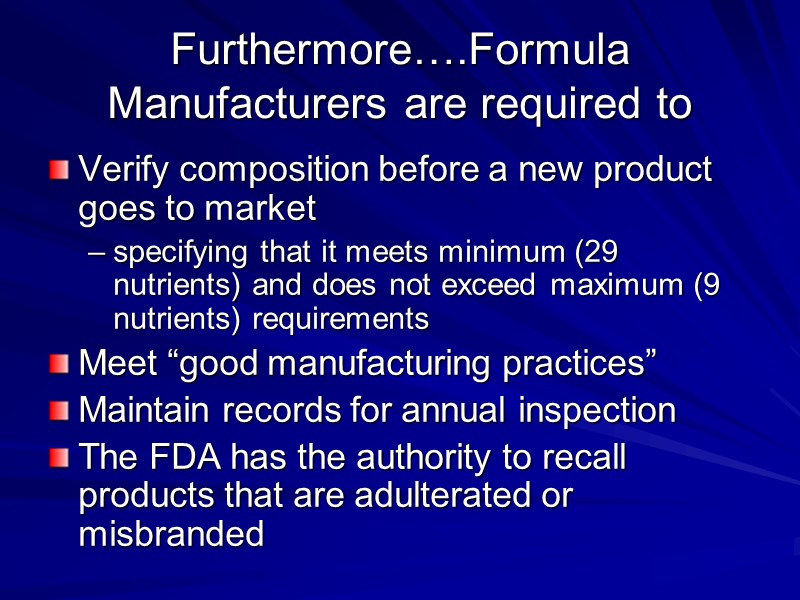
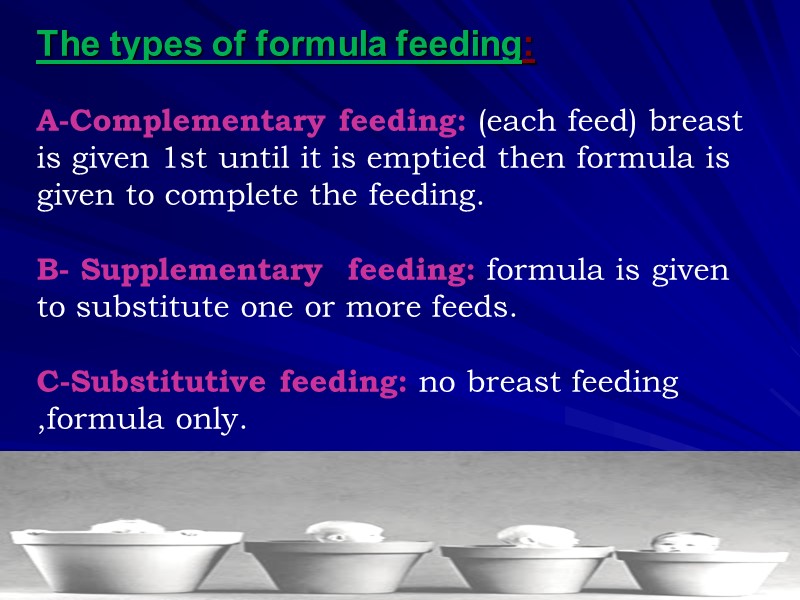
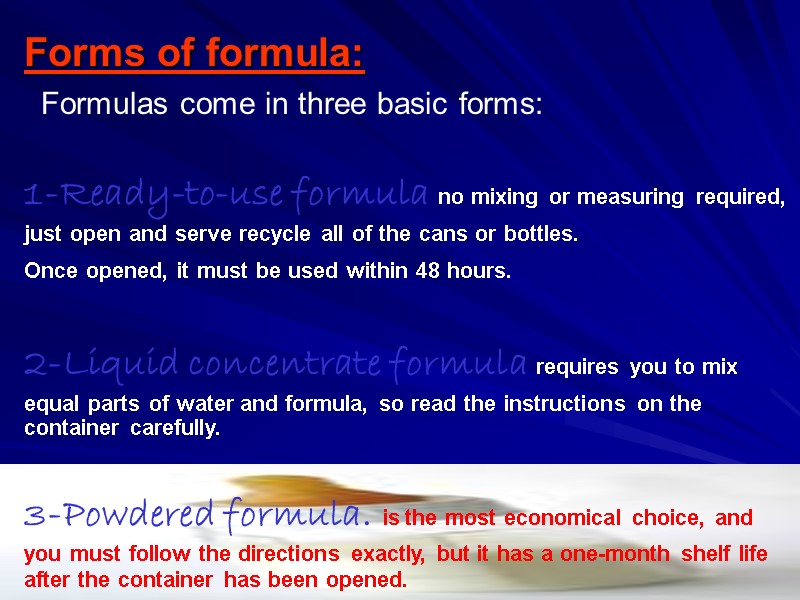
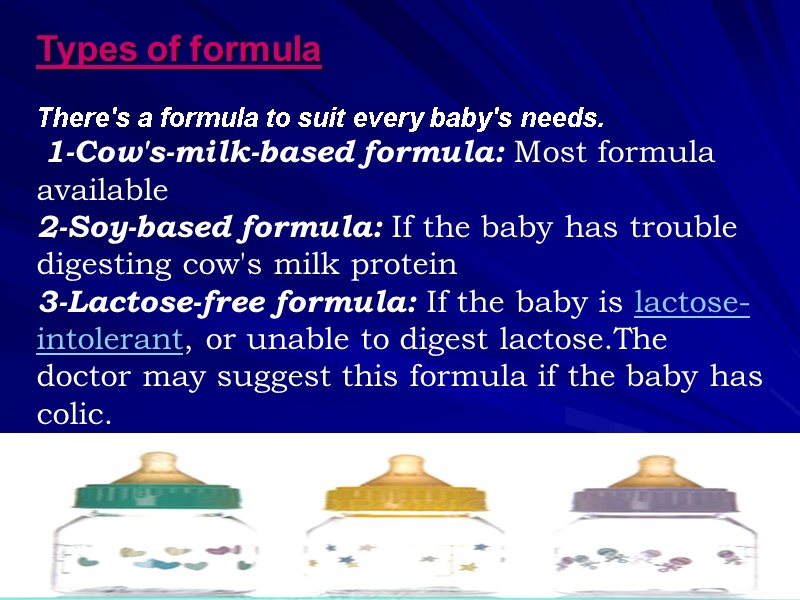
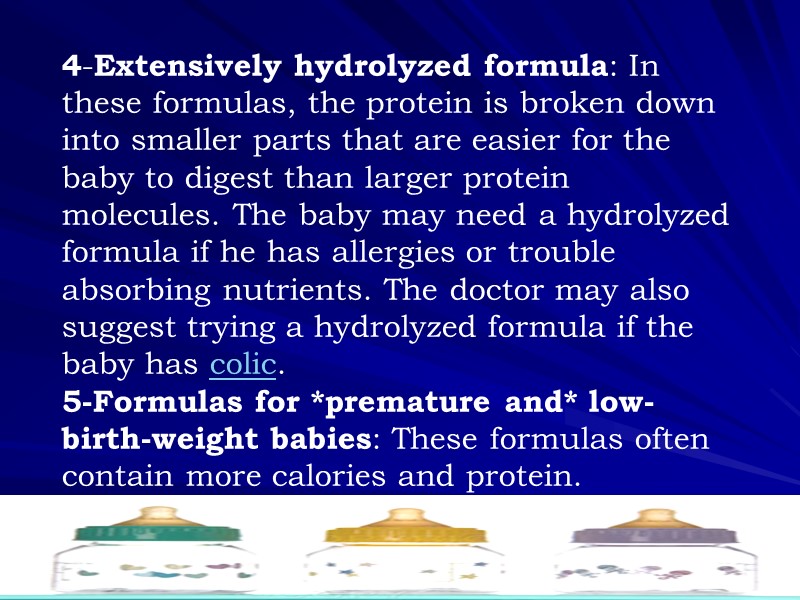
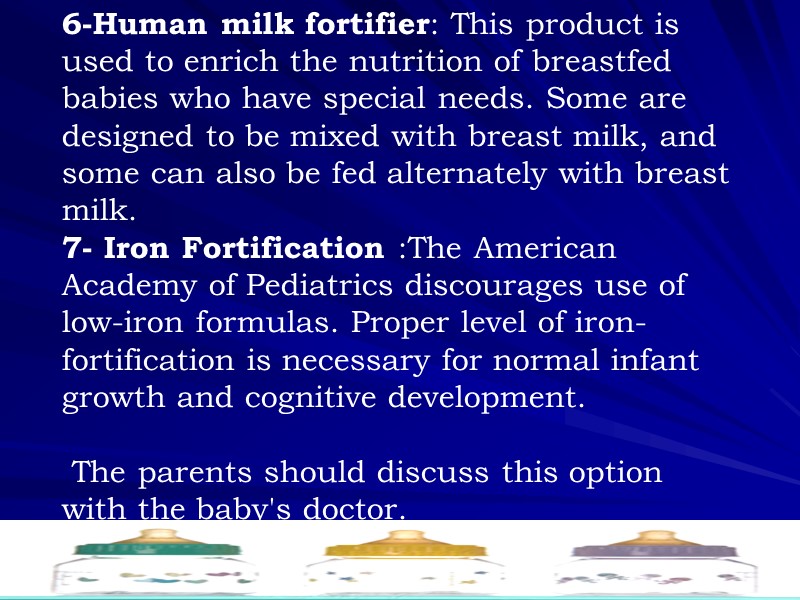
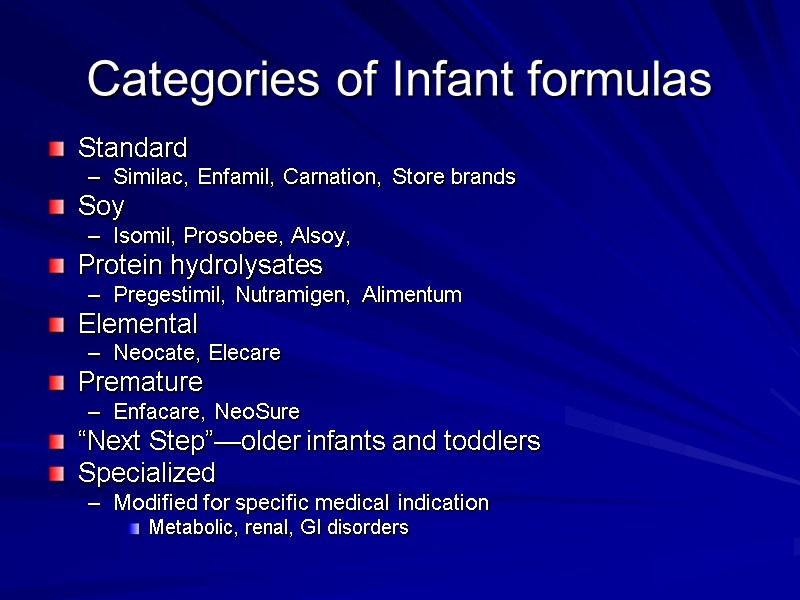
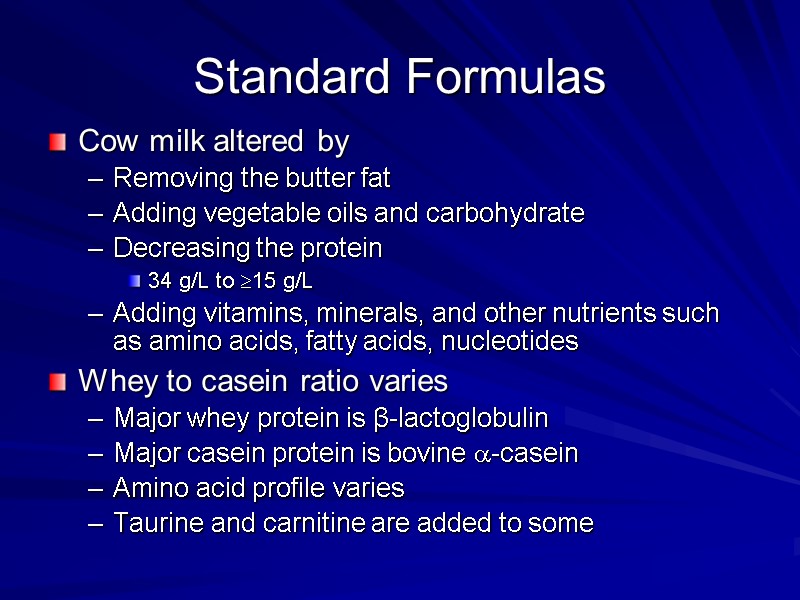
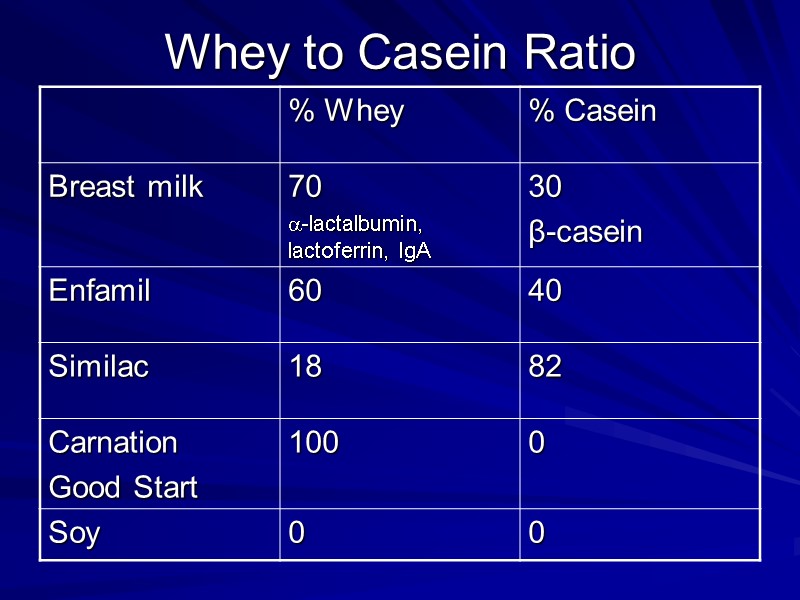
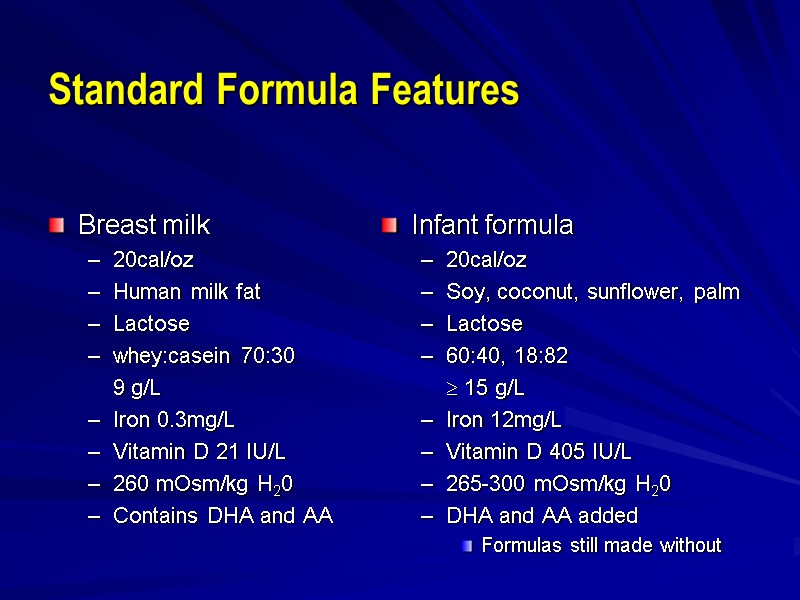
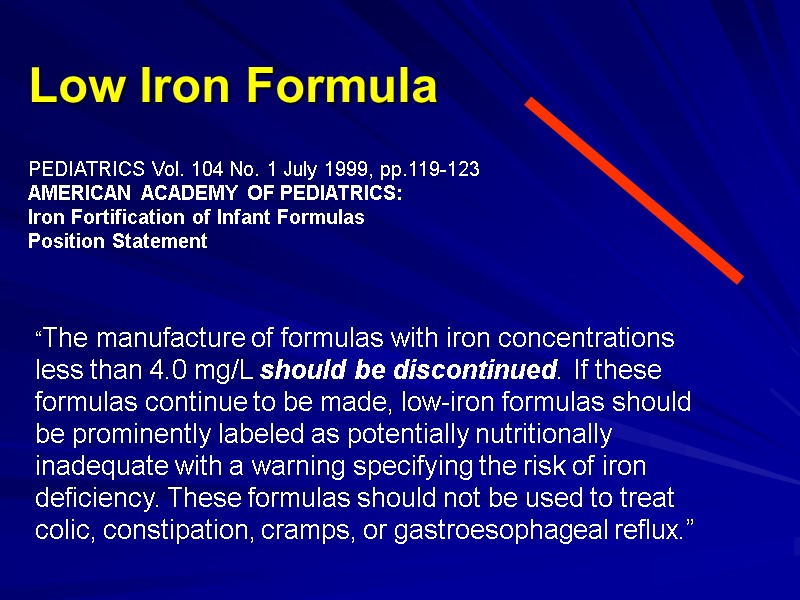
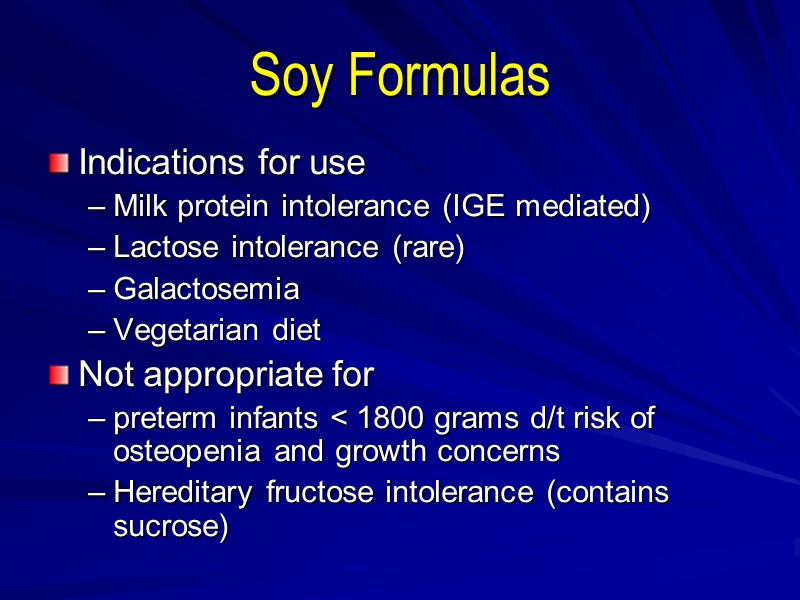
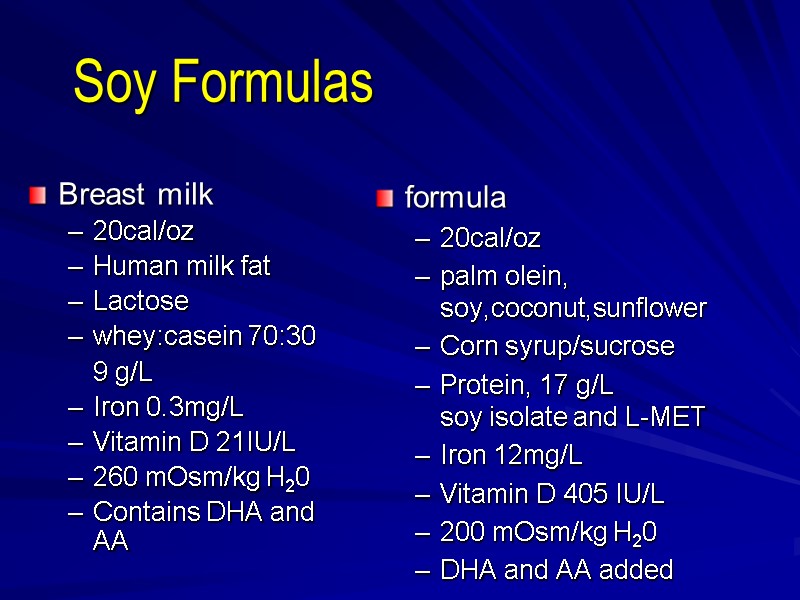
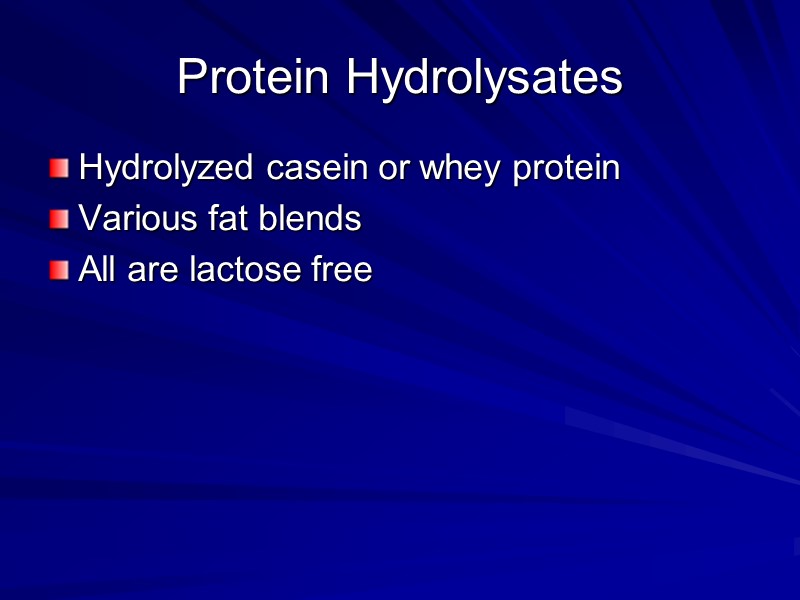
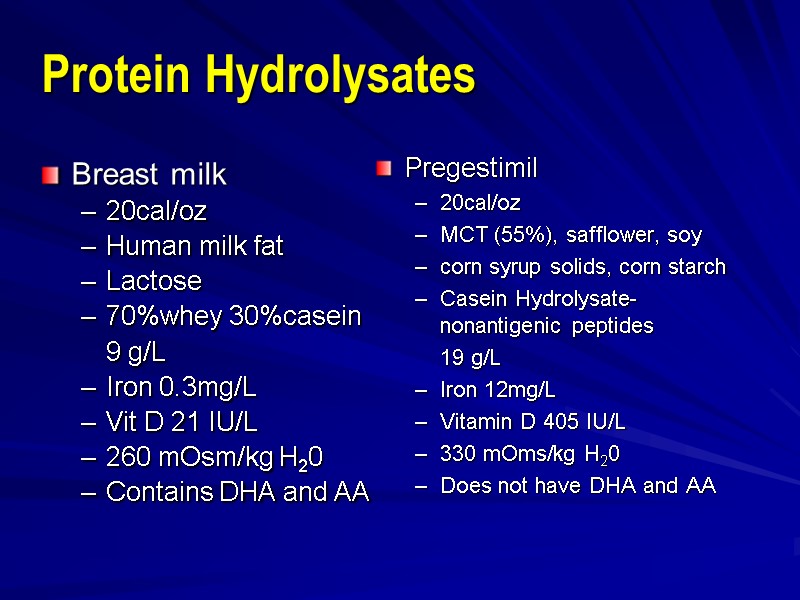
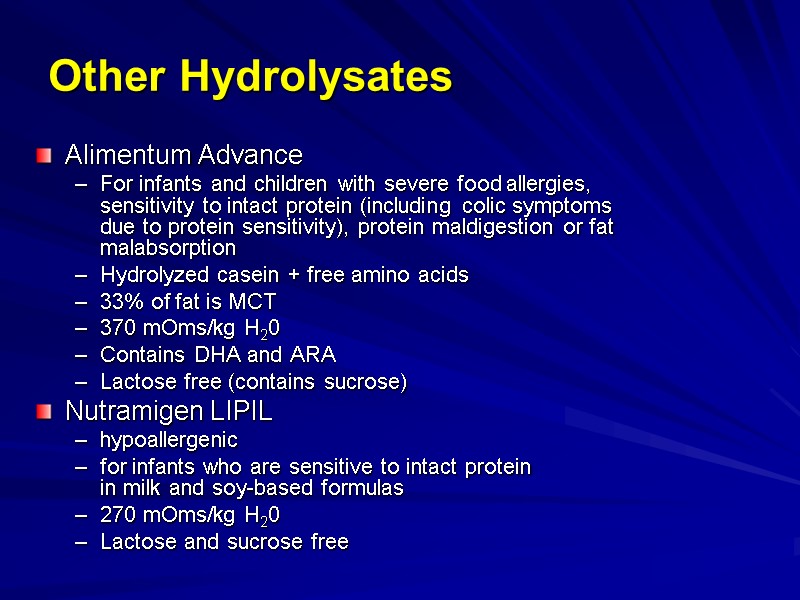
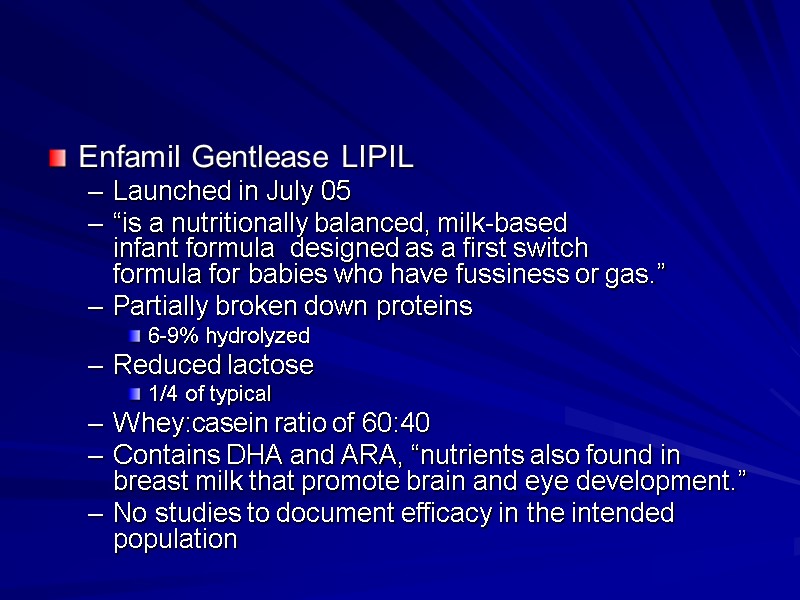
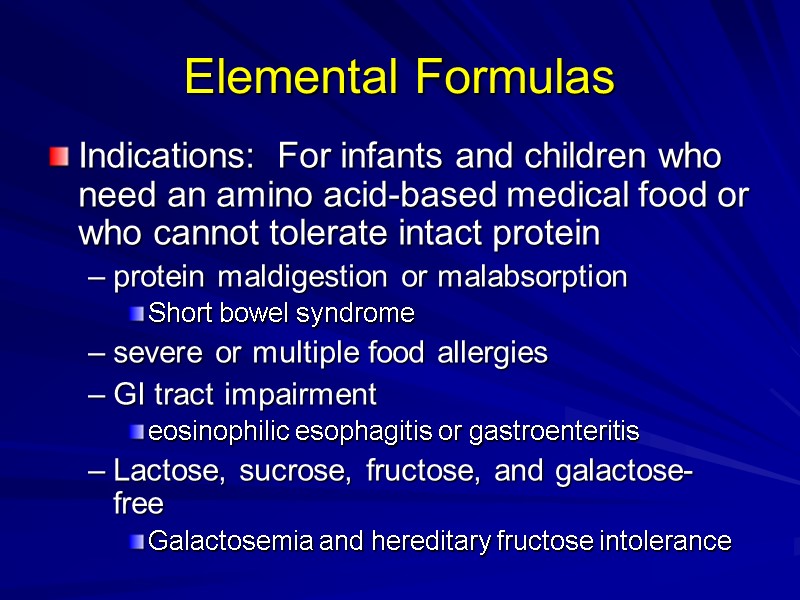
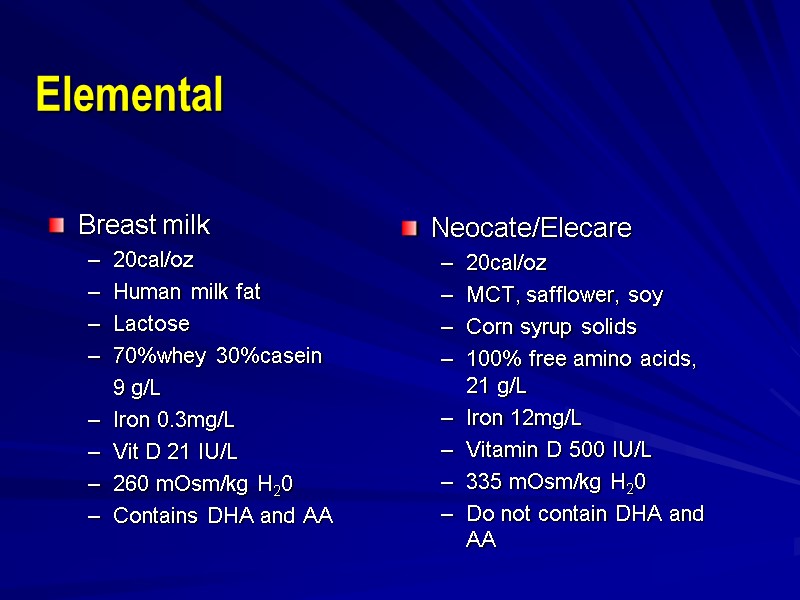
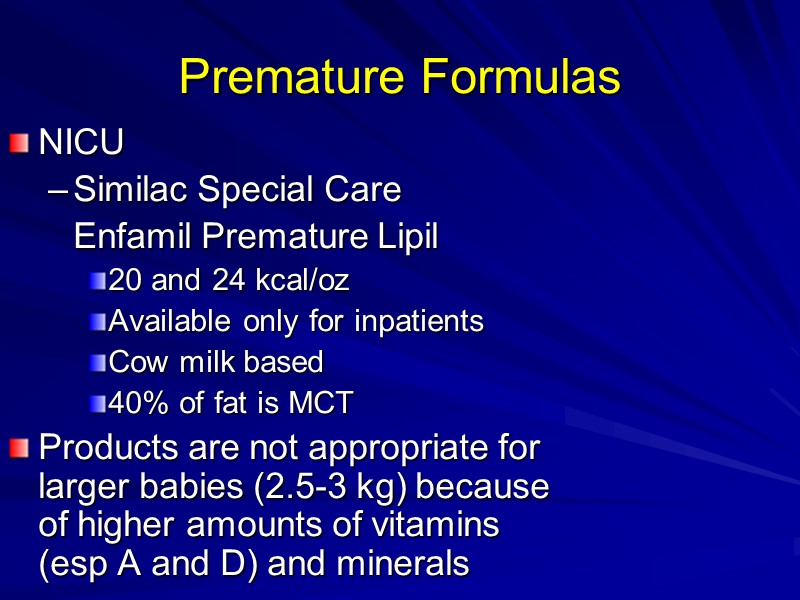
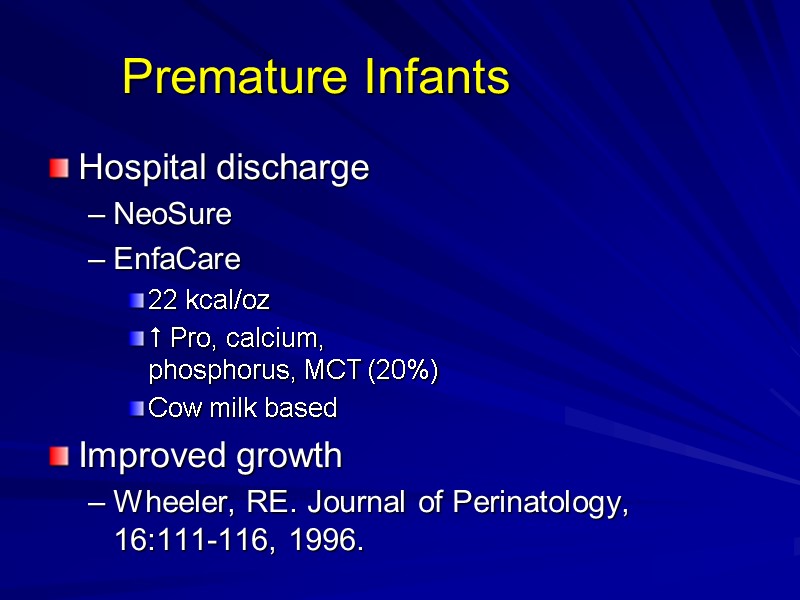
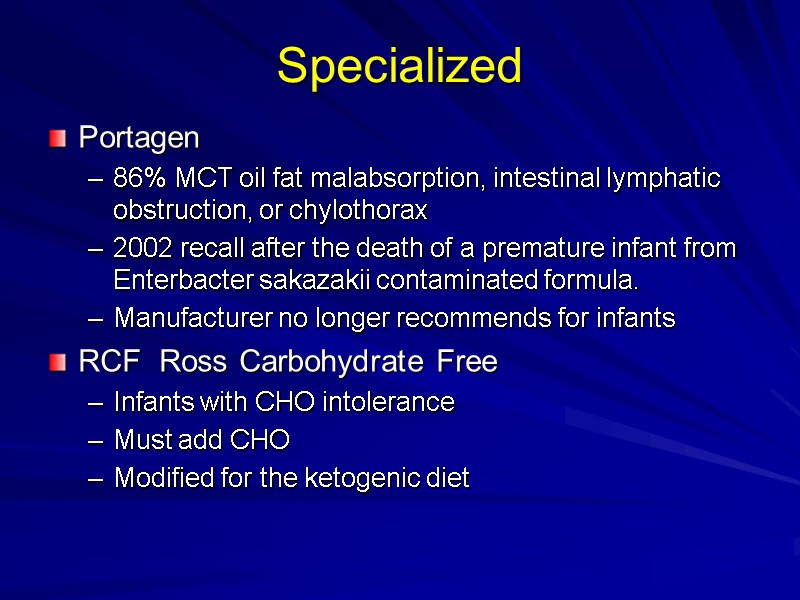
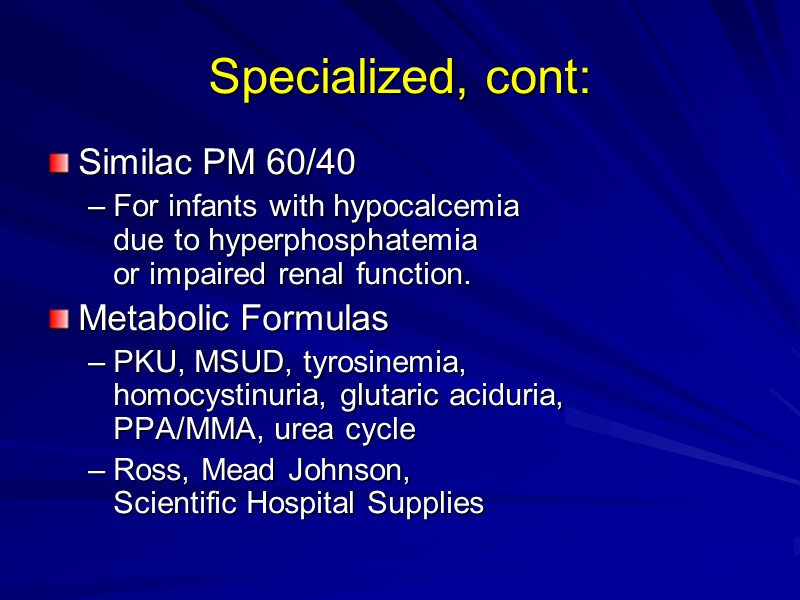
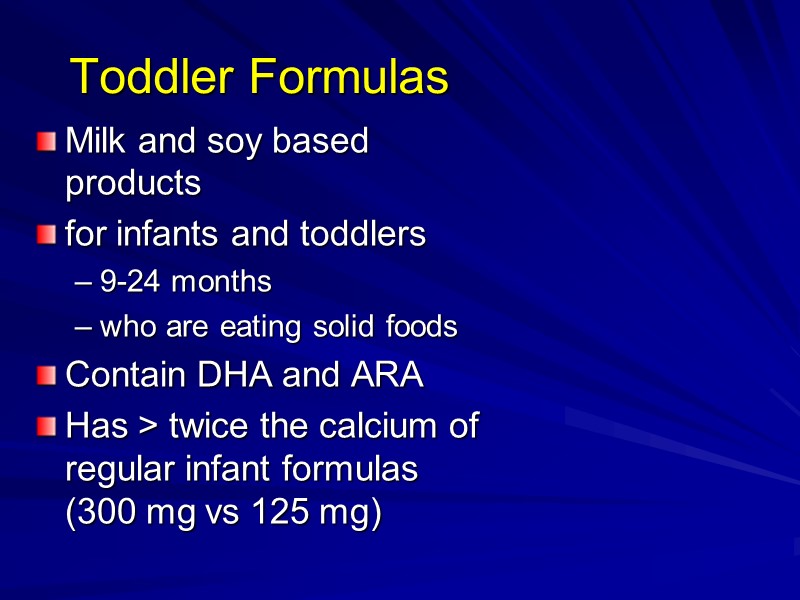
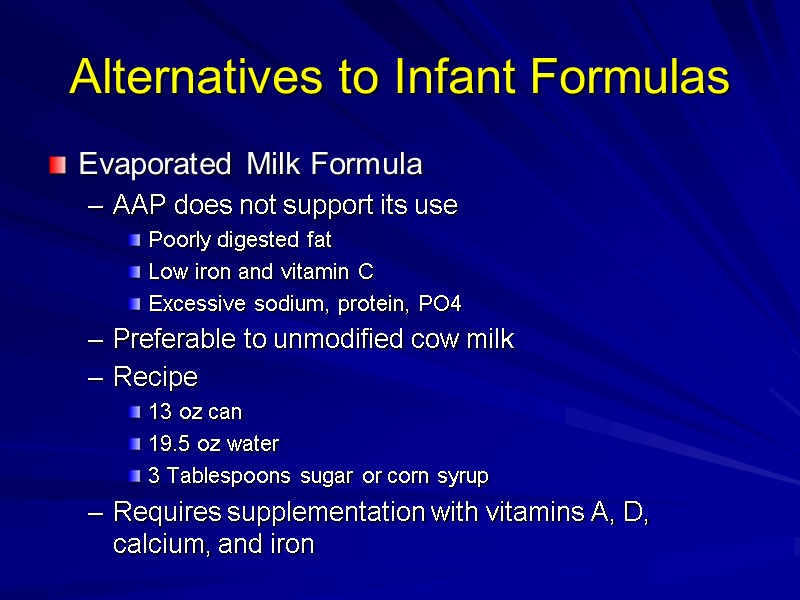
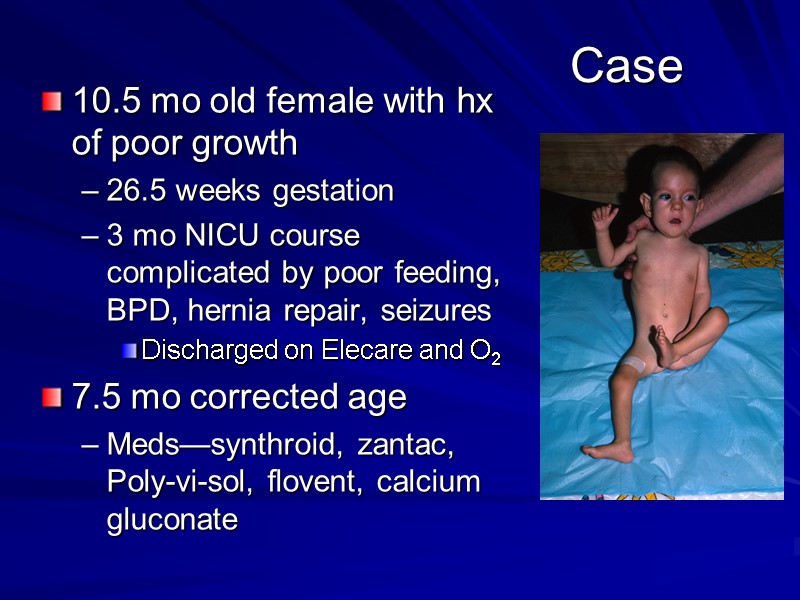
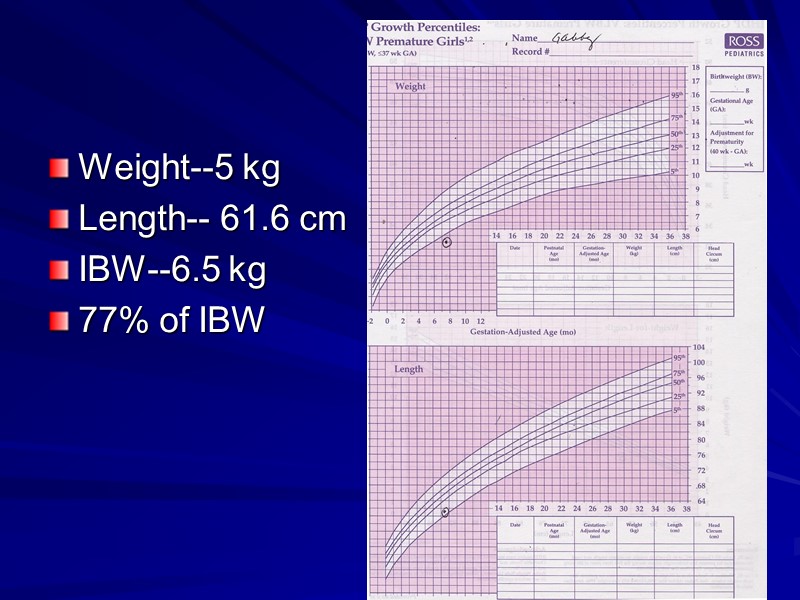
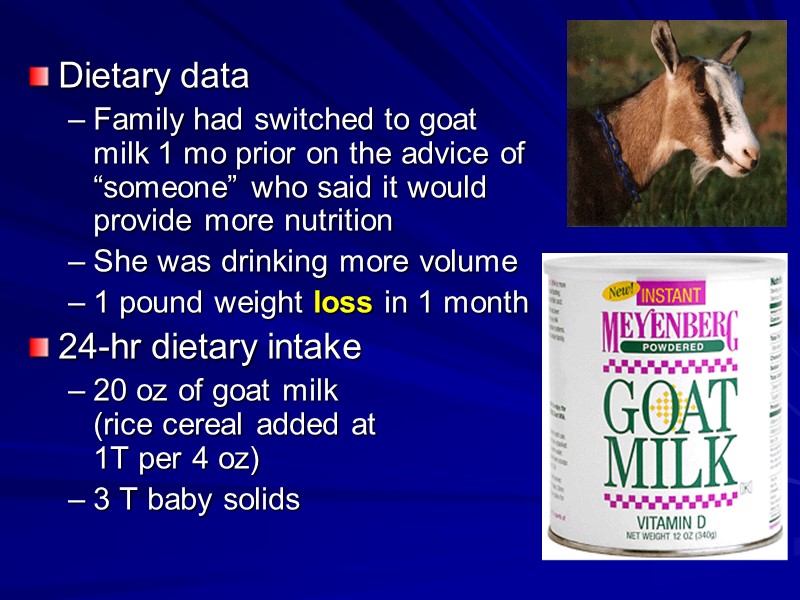
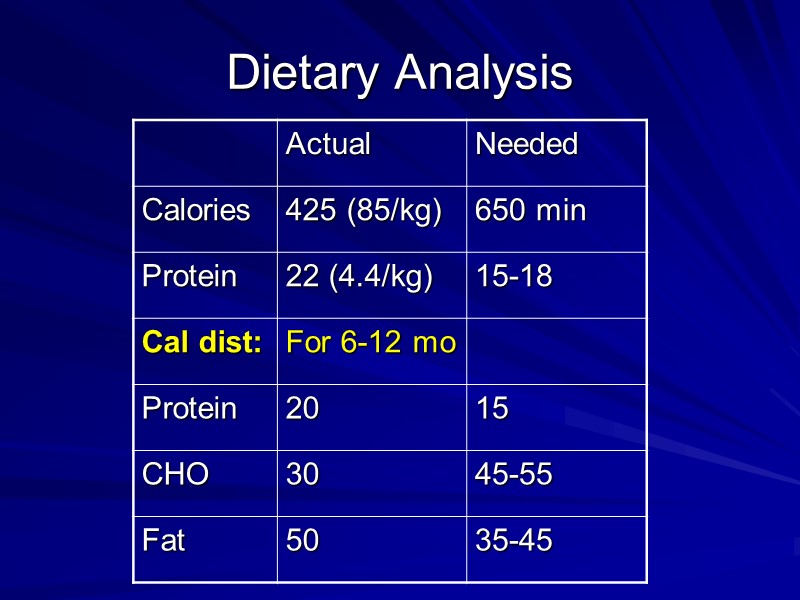
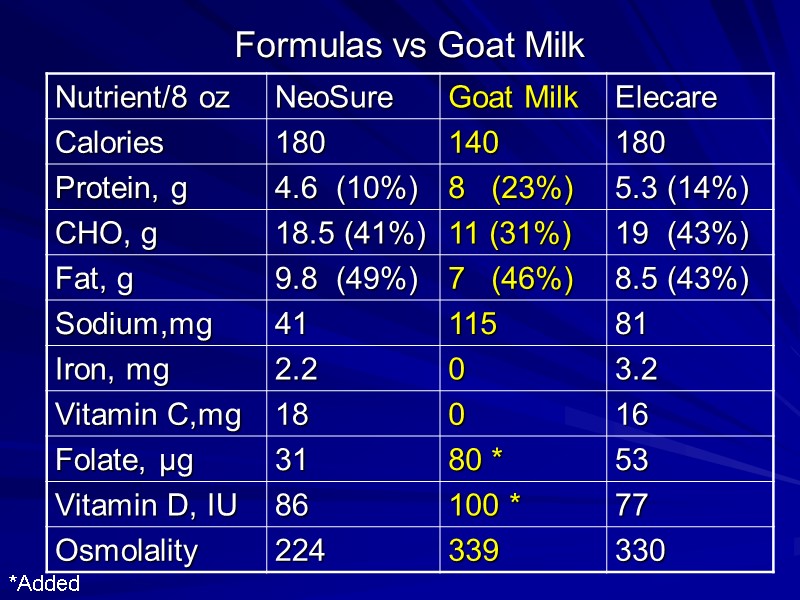
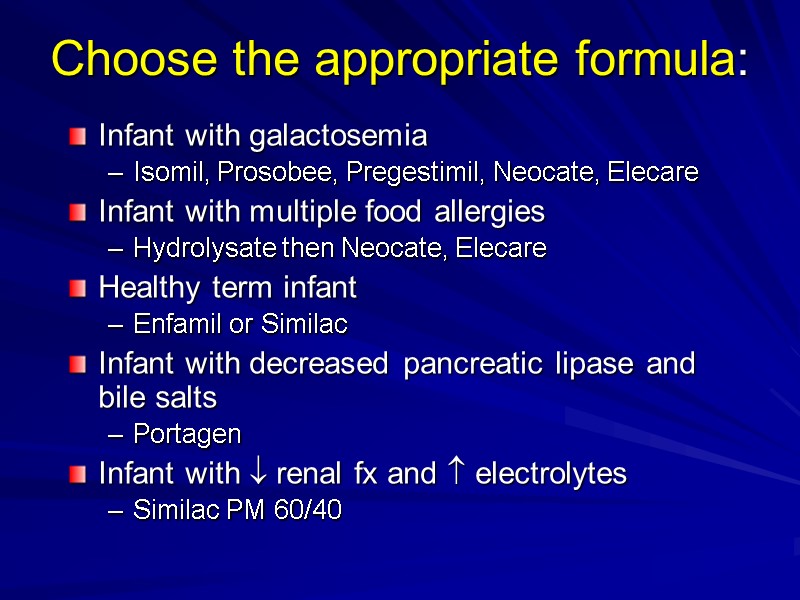

38156-infant_formulas_camp.ppt
- Количество слайдов: 46
 Infant Formulas What’s for What and What’s for Whom???
Infant Formulas What’s for What and What’s for Whom???
 Infant Formula Product intended for use by infants that simulates human milk or is suitable as a complete or partial substitute for human milk
Infant Formula Product intended for use by infants that simulates human milk or is suitable as a complete or partial substitute for human milk
 Historical Perspective Early attempts at artificial feeding of infants employed the milk of other mammals Infant survival during the 1st few weeks of life approached 0% Wet nurses were employed but their availability declined with the onset of the Industrial Revolution
Historical Perspective Early attempts at artificial feeding of infants employed the milk of other mammals Infant survival during the 1st few weeks of life approached 0% Wet nurses were employed but their availability declined with the onset of the Industrial Revolution
 Examples of Early Infant Feeding Vessels
Examples of Early Infant Feeding Vessels
 Commercial Formula Development In 1867, Henri Nestlé created the first commercially sold formula.
Commercial Formula Development In 1867, Henri Nestlé created the first commercially sold formula.
 At the end of the 19th century the gross composition of human milk was determined. Recognition of low concentration of protein in BM lead to the use of diluted cow milk Less mortality among infants But poor growth To increase caloric density of diluted cow milk, sugar or cereals were added Infants lived and grew Pediatrics became a medical specialty Mortality still remained high
At the end of the 19th century the gross composition of human milk was determined. Recognition of low concentration of protein in BM lead to the use of diluted cow milk Less mortality among infants But poor growth To increase caloric density of diluted cow milk, sugar or cereals were added Infants lived and grew Pediatrics became a medical specialty Mortality still remained high

 Early 20th century Electric refrigeration and pasteurization Significant decrease in mortality Increased popularity of formula feeding Improved sanitation and milk handling Modifications in cow protein improved digestibility Direct advertising to physicians influenced use of formulas
Early 20th century Electric refrigeration and pasteurization Significant decrease in mortality Increased popularity of formula feeding Improved sanitation and milk handling Modifications in cow protein improved digestibility Direct advertising to physicians influenced use of formulas
 Good rubber nipples made feeding easier
Good rubber nipples made feeding easier
 1911-- Dextri-Maltose introduced by Mead Johnson 1915 -- a formula called synthetic milk adapted (forerunner of Wyeth’s SMA) required only the addition of water 67 kcal/dL Non-fat cow milk Lactose Oleo and vegetable fat
1911-- Dextri-Maltose introduced by Mead Johnson 1915 -- a formula called synthetic milk adapted (forerunner of Wyeth’s SMA) required only the addition of water 67 kcal/dL Non-fat cow milk Lactose Oleo and vegetable fat
 The importance of vitamins was recognized Infant formulas became suitable vehicles Previously common vitamin-deficiency diseases such as scurvy and rickets became less prevalent
The importance of vitamins was recognized Infant formulas became suitable vehicles Previously common vitamin-deficiency diseases such as scurvy and rickets became less prevalent
 Highlights in Formula History 1929--the first soy flour formula was developed milk–free, lactose–free designed as an alternative to the home prepared milk–based formulas of the time soy flour caused significant abd discomfort 1942--protein hydrolysate formula 1959—iron-fortified formula appeared 1960—appreciation of renal solute load 1965--soy protein isolate formula
Highlights in Formula History 1929--the first soy flour formula was developed milk–free, lactose–free designed as an alternative to the home prepared milk–based formulas of the time soy flour caused significant abd discomfort 1942--protein hydrolysate formula 1959—iron-fortified formula appeared 1960—appreciation of renal solute load 1965--soy protein isolate formula
 1966—1st premmie formula designed to meet the special nutritional needs of rapidly growing low–birth–weight infants. 1971--first nutritionally complete protein hydrolysate formula containing MCT oil. 1990’s lactose free cow milk-based formulas appeared Nucleotides were added to some formulas Early 2000’s DHA and ARA were added to both cow milk and soy formulas
1966—1st premmie formula designed to meet the special nutritional needs of rapidly growing low–birth–weight infants. 1971--first nutritionally complete protein hydrolysate formula containing MCT oil. 1990’s lactose free cow milk-based formulas appeared Nucleotides were added to some formulas Early 2000’s DHA and ARA were added to both cow milk and soy formulas
 Infant Formula Act Passed by Congress in 1980 Following reports in 1979 that over 100 infants became seriously ill because of the lack of chloride in two soy-based formulas The new law authorized the FDA to adjust nutritional standards for infant foods to conform with the best available scientific knowledge. Manufacturers are required to test their products periodically and report to the FDA when they do not meet the official specs.
Infant Formula Act Passed by Congress in 1980 Following reports in 1979 that over 100 infants became seriously ill because of the lack of chloride in two soy-based formulas The new law authorized the FDA to adjust nutritional standards for infant foods to conform with the best available scientific knowledge. Manufacturers are required to test their products periodically and report to the FDA when they do not meet the official specs.
 Furthermore….Formula Manufacturers are required to Verify composition before a new product goes to market specifying that it meets minimum (29 nutrients) and does not exceed maximum (9 nutrients) requirements Meet “good manufacturing practices” Maintain records for annual inspection The FDA has the authority to recall products that are adulterated or misbranded
Furthermore….Formula Manufacturers are required to Verify composition before a new product goes to market specifying that it meets minimum (29 nutrients) and does not exceed maximum (9 nutrients) requirements Meet “good manufacturing practices” Maintain records for annual inspection The FDA has the authority to recall products that are adulterated or misbranded
 The types of formula feeding: A-Complementary feeding: (each feed) breast is given 1st until it is emptied then formula is given to complete the feeding. B- Supplementary feeding: formula is given to substitute one or more feeds. C-Substitutive feeding: no breast feeding ,formula only.
The types of formula feeding: A-Complementary feeding: (each feed) breast is given 1st until it is emptied then formula is given to complete the feeding. B- Supplementary feeding: formula is given to substitute one or more feeds. C-Substitutive feeding: no breast feeding ,formula only.
 Forms of formula: Formulas come in three basic forms: 1-Ready-to-use formula no mixing or measuring required, just open and serve recycle all of the cans or bottles. Once opened, it must be used within 48 hours. 2-Liquid concentrate formula requires you to mix equal parts of water and formula, so read the instructions on the container carefully. 3-Powdered formula. is the most economical choice, and you must follow the directions exactly, but it has a one-month shelf life after the container has been opened.
Forms of formula: Formulas come in three basic forms: 1-Ready-to-use formula no mixing or measuring required, just open and serve recycle all of the cans or bottles. Once opened, it must be used within 48 hours. 2-Liquid concentrate formula requires you to mix equal parts of water and formula, so read the instructions on the container carefully. 3-Powdered formula. is the most economical choice, and you must follow the directions exactly, but it has a one-month shelf life after the container has been opened.
 Types of formula There's a formula to suit every baby's needs. 1-Cow's-milk-based formula: Most formula available 2-Soy-based formula: If the baby has trouble digesting cow's milk protein 3-Lactose-free formula: If the baby is lactose-intolerant, or unable to digest lactose.The doctor may suggest this formula if the baby has colic.
Types of formula There's a formula to suit every baby's needs. 1-Cow's-milk-based formula: Most formula available 2-Soy-based formula: If the baby has trouble digesting cow's milk protein 3-Lactose-free formula: If the baby is lactose-intolerant, or unable to digest lactose.The doctor may suggest this formula if the baby has colic.
 4-Extensively hydrolyzed formula: In these formulas, the protein is broken down into smaller parts that are easier for the baby to digest than larger protein molecules. The baby may need a hydrolyzed formula if he has allergies or trouble absorbing nutrients. The doctor may also suggest trying a hydrolyzed formula if the baby has colic. 5-Formulas for *premature and* low-birth-weight babies: These formulas often contain more calories and protein.
4-Extensively hydrolyzed formula: In these formulas, the protein is broken down into smaller parts that are easier for the baby to digest than larger protein molecules. The baby may need a hydrolyzed formula if he has allergies or trouble absorbing nutrients. The doctor may also suggest trying a hydrolyzed formula if the baby has colic. 5-Formulas for *premature and* low-birth-weight babies: These formulas often contain more calories and protein.
 6-Human milk fortifier: This product is used to enrich the nutrition of breastfed babies who have special needs. Some are designed to be mixed with breast milk, and some can also be fed alternately with breast milk. 7- Iron Fortification :The American Academy of Pediatrics discourages use of low-iron formulas. Proper level of iron-fortification is necessary for normal infant growth and cognitive development. The parents should discuss this option with the baby's doctor.
6-Human milk fortifier: This product is used to enrich the nutrition of breastfed babies who have special needs. Some are designed to be mixed with breast milk, and some can also be fed alternately with breast milk. 7- Iron Fortification :The American Academy of Pediatrics discourages use of low-iron formulas. Proper level of iron-fortification is necessary for normal infant growth and cognitive development. The parents should discuss this option with the baby's doctor.
 Categories of Infant formulas Standard Similac, Enfamil, Carnation, Store brands Soy Isomil, Prosobee, Alsoy, Protein hydrolysates Pregestimil, Nutramigen, Alimentum Elemental Neocate, Elecare Premature Enfacare, NeoSure “Next Step”—older infants and toddlers Specialized Modified for specific medical indication Metabolic, renal, GI disorders
Categories of Infant formulas Standard Similac, Enfamil, Carnation, Store brands Soy Isomil, Prosobee, Alsoy, Protein hydrolysates Pregestimil, Nutramigen, Alimentum Elemental Neocate, Elecare Premature Enfacare, NeoSure “Next Step”—older infants and toddlers Specialized Modified for specific medical indication Metabolic, renal, GI disorders
 Standard Formulas Cow milk altered by Removing the butter fat Adding vegetable oils and carbohydrate Decreasing the protein 34 g/L to 15 g/L Adding vitamins, minerals, and other nutrients such as amino acids, fatty acids, nucleotides Whey to casein ratio varies Major whey protein is β-lactoglobulin Major casein protein is bovine -casein Amino acid profile varies Taurine and carnitine are added to some
Standard Formulas Cow milk altered by Removing the butter fat Adding vegetable oils and carbohydrate Decreasing the protein 34 g/L to 15 g/L Adding vitamins, minerals, and other nutrients such as amino acids, fatty acids, nucleotides Whey to casein ratio varies Major whey protein is β-lactoglobulin Major casein protein is bovine -casein Amino acid profile varies Taurine and carnitine are added to some
 Whey to Casein Ratio
Whey to Casein Ratio
 Standard Formula Features Breast milk 20cal/oz Human milk fat Lactose whey:casein 70:30 9 g/L Iron 0.3mg/L Vitamin D 21 IU/L 260 mOsm/kg H20 Contains DHA and AA Infant formula 20cal/oz Soy, coconut, sunflower, palm Lactose 60:40, 18:82 15 g/L Iron 12mg/L Vitamin D 405 IU/L 265-300 mOsm/kg H20 DHA and AA added Formulas still made without
Standard Formula Features Breast milk 20cal/oz Human milk fat Lactose whey:casein 70:30 9 g/L Iron 0.3mg/L Vitamin D 21 IU/L 260 mOsm/kg H20 Contains DHA and AA Infant formula 20cal/oz Soy, coconut, sunflower, palm Lactose 60:40, 18:82 15 g/L Iron 12mg/L Vitamin D 405 IU/L 265-300 mOsm/kg H20 DHA and AA added Formulas still made without
 Low Iron Formula “The manufacture of formulas with iron concentrations less than 4.0 mg/L should be discontinued. If these formulas continue to be made, low-iron formulas should be prominently labeled as potentially nutritionally inadequate with a warning specifying the risk of iron deficiency. These formulas should not be used to treat colic, constipation, cramps, or gastroesophageal reflux.” PEDIATRICS Vol. 104 No. 1 July 1999, pp.119-123 AMERICAN ACADEMY OF PEDIATRICS: Iron Fortification of Infant Formulas Position Statement
Low Iron Formula “The manufacture of formulas with iron concentrations less than 4.0 mg/L should be discontinued. If these formulas continue to be made, low-iron formulas should be prominently labeled as potentially nutritionally inadequate with a warning specifying the risk of iron deficiency. These formulas should not be used to treat colic, constipation, cramps, or gastroesophageal reflux.” PEDIATRICS Vol. 104 No. 1 July 1999, pp.119-123 AMERICAN ACADEMY OF PEDIATRICS: Iron Fortification of Infant Formulas Position Statement
 Soy Formulas Indications for use Milk protein intolerance (IGE mediated) Lactose intolerance (rare) Galactosemia Vegetarian diet Not appropriate for preterm infants < 1800 grams d/t risk of osteopenia and growth concerns Hereditary fructose intolerance (contains sucrose)
Soy Formulas Indications for use Milk protein intolerance (IGE mediated) Lactose intolerance (rare) Galactosemia Vegetarian diet Not appropriate for preterm infants < 1800 grams d/t risk of osteopenia and growth concerns Hereditary fructose intolerance (contains sucrose)
 Soy Formulas Breast milk 20cal/oz Human milk fat Lactose whey:casein 70:30 9 g/L Iron 0.3mg/L Vitamin D 21IU/L 260 mOsm/kg H20 Contains DHA and AA formula 20cal/oz palm olein, soy,coconut,sunflower Corn syrup/sucrose Protein, 17 g/L soy isolate and L-MET Iron 12mg/L Vitamin D 405 IU/L 200 mOsm/kg H20 DHA and AA added
Soy Formulas Breast milk 20cal/oz Human milk fat Lactose whey:casein 70:30 9 g/L Iron 0.3mg/L Vitamin D 21IU/L 260 mOsm/kg H20 Contains DHA and AA formula 20cal/oz palm olein, soy,coconut,sunflower Corn syrup/sucrose Protein, 17 g/L soy isolate and L-MET Iron 12mg/L Vitamin D 405 IU/L 200 mOsm/kg H20 DHA and AA added
 Protein Hydrolysates Hydrolyzed casein or whey protein Various fat blends All are lactose free
Protein Hydrolysates Hydrolyzed casein or whey protein Various fat blends All are lactose free
 Protein Hydrolysates Breast milk 20cal/oz Human milk fat Lactose 70%whey 30%casein 9 g/L Iron 0.3mg/L Vit D 21 IU/L 260 mOsm/kg H20 Contains DHA and AA Pregestimil 20cal/oz MCT (55%), safflower, soy corn syrup solids, corn starch Casein Hydrolysate-nonantigenic peptides 19 g/L Iron 12mg/L Vitamin D 405 IU/L 330 mOms/kg H20 Does not have DHA and AA
Protein Hydrolysates Breast milk 20cal/oz Human milk fat Lactose 70%whey 30%casein 9 g/L Iron 0.3mg/L Vit D 21 IU/L 260 mOsm/kg H20 Contains DHA and AA Pregestimil 20cal/oz MCT (55%), safflower, soy corn syrup solids, corn starch Casein Hydrolysate-nonantigenic peptides 19 g/L Iron 12mg/L Vitamin D 405 IU/L 330 mOms/kg H20 Does not have DHA and AA
 Other Hydrolysates Alimentum Advance For infants and children with severe food allergies, sensitivity to intact protein (including colic symptoms due to protein sensitivity), protein maldigestion or fat malabsorption Hydrolyzed casein + free amino acids 33% of fat is MCT 370 mOms/kg H20 Contains DHA and ARA Lactose free (contains sucrose) Nutramigen LIPIL hypoallergenic for infants who are sensitive to intact protein in milk and soy-based formulas 270 mOms/kg H20 Lactose and sucrose free
Other Hydrolysates Alimentum Advance For infants and children with severe food allergies, sensitivity to intact protein (including colic symptoms due to protein sensitivity), protein maldigestion or fat malabsorption Hydrolyzed casein + free amino acids 33% of fat is MCT 370 mOms/kg H20 Contains DHA and ARA Lactose free (contains sucrose) Nutramigen LIPIL hypoallergenic for infants who are sensitive to intact protein in milk and soy-based formulas 270 mOms/kg H20 Lactose and sucrose free
 Enfamil Gentlease LIPIL Launched in July 05 “is a nutritionally balanced, milk-based infant formula designed as a first switch formula for babies who have fussiness or gas.” Partially broken down proteins 6-9% hydrolyzed Reduced lactose 1/4 of typical Whey:casein ratio of 60:40 Contains DHA and ARA, “nutrients also found in breast milk that promote brain and eye development.” No studies to document efficacy in the intended population
Enfamil Gentlease LIPIL Launched in July 05 “is a nutritionally balanced, milk-based infant formula designed as a first switch formula for babies who have fussiness or gas.” Partially broken down proteins 6-9% hydrolyzed Reduced lactose 1/4 of typical Whey:casein ratio of 60:40 Contains DHA and ARA, “nutrients also found in breast milk that promote brain and eye development.” No studies to document efficacy in the intended population
 Elemental Formulas Indications: For infants and children who need an amino acid-based medical food or who cannot tolerate intact protein protein maldigestion or malabsorption Short bowel syndrome severe or multiple food allergies GI tract impairment eosinophilic esophagitis or gastroenteritis Lactose, sucrose, fructose, and galactose-free Galactosemia and hereditary fructose intolerance
Elemental Formulas Indications: For infants and children who need an amino acid-based medical food or who cannot tolerate intact protein protein maldigestion or malabsorption Short bowel syndrome severe or multiple food allergies GI tract impairment eosinophilic esophagitis or gastroenteritis Lactose, sucrose, fructose, and galactose-free Galactosemia and hereditary fructose intolerance
 Elemental Breast milk 20cal/oz Human milk fat Lactose 70%whey 30%casein 9 g/L Iron 0.3mg/L Vit D 21 IU/L 260 mOsm/kg H20 Contains DHA and AA Neocate/Elecare 20cal/oz MCT, safflower, soy Corn syrup solids 100% free amino acids, 21 g/L Iron 12mg/L Vitamin D 500 IU/L 335 mOsm/kg H20 Do not contain DHA and AA
Elemental Breast milk 20cal/oz Human milk fat Lactose 70%whey 30%casein 9 g/L Iron 0.3mg/L Vit D 21 IU/L 260 mOsm/kg H20 Contains DHA and AA Neocate/Elecare 20cal/oz MCT, safflower, soy Corn syrup solids 100% free amino acids, 21 g/L Iron 12mg/L Vitamin D 500 IU/L 335 mOsm/kg H20 Do not contain DHA and AA
 Premature Formulas NICU Similac Special Care Enfamil Premature Lipil 20 and 24 kcal/oz Available only for inpatients Cow milk based 40% of fat is MCT Products are not appropriate for larger babies (2.5-3 kg) because of higher amounts of vitamins (esp A and D) and minerals
Premature Formulas NICU Similac Special Care Enfamil Premature Lipil 20 and 24 kcal/oz Available only for inpatients Cow milk based 40% of fat is MCT Products are not appropriate for larger babies (2.5-3 kg) because of higher amounts of vitamins (esp A and D) and minerals
 Premature Infants Hospital discharge NeoSure EnfaCare 22 kcal/oz Pro, calcium, phosphorus, MCT (20%) Cow milk based Improved growth Wheeler, RE. Journal of Perinatology, 16:111-116, 1996.
Premature Infants Hospital discharge NeoSure EnfaCare 22 kcal/oz Pro, calcium, phosphorus, MCT (20%) Cow milk based Improved growth Wheeler, RE. Journal of Perinatology, 16:111-116, 1996.
 Specialized Portagen 86% MCT oil fat malabsorption, intestinal lymphatic obstruction, or chylothorax 2002 recall after the death of a premature infant from Enterbacter sakazakii contaminated formula. Manufacturer no longer recommends for infants RCF Ross Carbohydrate Free Infants with CHO intolerance Must add CHO Modified for the ketogenic diet
Specialized Portagen 86% MCT oil fat malabsorption, intestinal lymphatic obstruction, or chylothorax 2002 recall after the death of a premature infant from Enterbacter sakazakii contaminated formula. Manufacturer no longer recommends for infants RCF Ross Carbohydrate Free Infants with CHO intolerance Must add CHO Modified for the ketogenic diet
 Specialized, cont: Similac PM 60/40 For infants with hypocalcemia due to hyperphosphatemia or impaired renal function. Metabolic Formulas PKU, MSUD, tyrosinemia, homocystinuria, glutaric aciduria, PPA/MMA, urea cycle Ross, Mead Johnson, Scientific Hospital Supplies
Specialized, cont: Similac PM 60/40 For infants with hypocalcemia due to hyperphosphatemia or impaired renal function. Metabolic Formulas PKU, MSUD, tyrosinemia, homocystinuria, glutaric aciduria, PPA/MMA, urea cycle Ross, Mead Johnson, Scientific Hospital Supplies
 Toddler Formulas Milk and soy based products for infants and toddlers 9-24 months who are eating solid foods Contain DHA and ARA Has > twice the calcium of regular infant formulas (300 mg vs 125 mg)
Toddler Formulas Milk and soy based products for infants and toddlers 9-24 months who are eating solid foods Contain DHA and ARA Has > twice the calcium of regular infant formulas (300 mg vs 125 mg)
 Alternatives to Infant Formulas Evaporated Milk Formula AAP does not support its use Poorly digested fat Low iron and vitamin C Excessive sodium, protein, PO4 Preferable to unmodified cow milk Recipe 13 oz can 19.5 oz water 3 Tablespoons sugar or corn syrup Requires supplementation with vitamins A, D, calcium, and iron
Alternatives to Infant Formulas Evaporated Milk Formula AAP does not support its use Poorly digested fat Low iron and vitamin C Excessive sodium, protein, PO4 Preferable to unmodified cow milk Recipe 13 oz can 19.5 oz water 3 Tablespoons sugar or corn syrup Requires supplementation with vitamins A, D, calcium, and iron
 Case 10.5 mo old female with hx of poor growth 26.5 weeks gestation 3 mo NICU course complicated by poor feeding, BPD, hernia repair, seizures Discharged on Elecare and O2 7.5 mo corrected age Meds—synthroid, zantac, Poly-vi-sol, flovent, calcium gluconate
Case 10.5 mo old female with hx of poor growth 26.5 weeks gestation 3 mo NICU course complicated by poor feeding, BPD, hernia repair, seizures Discharged on Elecare and O2 7.5 mo corrected age Meds—synthroid, zantac, Poly-vi-sol, flovent, calcium gluconate
 Weight--5 kg Length-- 61.6 cm IBW--6.5 kg 77% of IBW
Weight--5 kg Length-- 61.6 cm IBW--6.5 kg 77% of IBW
 Dietary data Family had switched to goat milk 1 mo prior on the advice of “someone” who said it would provide more nutrition She was drinking more volume 1 pound weight loss in 1 month 24-hr dietary intake 20 oz of goat milk (rice cereal added at 1T per 4 oz) 3 T baby solids
Dietary data Family had switched to goat milk 1 mo prior on the advice of “someone” who said it would provide more nutrition She was drinking more volume 1 pound weight loss in 1 month 24-hr dietary intake 20 oz of goat milk (rice cereal added at 1T per 4 oz) 3 T baby solids
 Dietary Analysis
Dietary Analysis
 Formulas vs Goat Milk *Added
Formulas vs Goat Milk *Added
 Choose the appropriate formula: Infant with galactosemia Isomil, Prosobee, Pregestimil, Neocate, Elecare Infant with multiple food allergies Hydrolysate then Neocate, Elecare Healthy term infant Enfamil or Similac Infant with decreased pancreatic lipase and bile salts Portagen Infant with renal fx and electrolytes Similac PM 60/40
Choose the appropriate formula: Infant with galactosemia Isomil, Prosobee, Pregestimil, Neocate, Elecare Infant with multiple food allergies Hydrolysate then Neocate, Elecare Healthy term infant Enfamil or Similac Infant with decreased pancreatic lipase and bile salts Portagen Infant with renal fx and electrolytes Similac PM 60/40
 The End!
The End!

